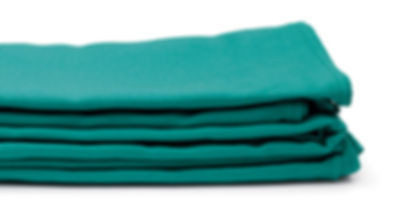We are 100% European made and we are proud of it.
At Technotex we have 130 years of textile experience that has been passed down over 5 family generations👨👩👦.
Today more than 550 people😍 work daily in our 3 local factories, in which we produce fully and totally vertically (from the thread to the garment), all our fabrics 🧶, we apply the technical properties 🔬 and we make our own garments👕.
🌳♻️ They are 100% reusable and respectful with the environment

Our factories are constantly innovating and any client can request a visit to the factory and learn a little more in depth about our work, our efforts to improve the environment and, most importantly, our team !!!
This year, due to the current situation, we have opened the doors of our factories to all our customers in a virtual way, with the aim that no one is left without knowing what is behind each Technotex garment. 📹Watch the video and get to know us a little more.
The tour begins in 3 of our factories, located in Barcelona (Olesa de Montserrat), Lleida (Borges Blanques) and Girona (Massanes):
In these factories we weave, dye, apply finishes and control all our fabrics.
Later we see part of our central offices, in Olesa de Montserrat, where we have the departments of Direction, Design, R&D, Commercial, Finance, Production management and administration.
Once located, we enter into production, going through the different processes:
1- Creel assembly phase: They consist of preparing the cones and grouping all the threads (in our case 1,000 threads) in a coil and replicating it as many times as coils are needed for the next phase.
2- Meeting Phase: This involves grouping the coils from the previous phase (from a minimum of 8 coils to a maximum of 16) into a single large coil. This new Coil, groups the total of vertical threads (hereinafter warp) that will form the fabric. Eg Supposing that 10 primary bobbins are used, of 1000 threads each, we will obtain in this phase a bobbin of 10,000 threads that form the fabric warp. That is, the width of the fabric (between 1.6 and 1.7 meters) is made up of 10,000 vertical threads.
3- Gluing Phase: In this phase, the threads are immersed in a bath of glue (adhesive), being covered with a layer that, when drying, offers two properties to the warp:
a) Abrasion resistance
b) Tensile strength
This ensures that the yarns do not break in the weaving phase and therefore increases production efficiency.
4- Weaving phase: Once we have the warp ready, it is time to start weaving. For this, the warp is tensioned and, in the movements that we have (there are several possibilities, in our case e 1x1) we pass the weft (Horizontal threads of the fabric) to build the fabric.
Without the previous gluing phase, the threads would not withstand this high-tension and high-speed mechanical action (each weft thread passes through the more than 10,000 perpendicular threads in milliseconds). Friction in the warp would cause tears in the fabric.
5- Desizing phase: Once the fabric has been woven, the tail of phase 3 loses its functionality and must be removed to recover the natural state of the threads. Subsequently, the fabric is passed through various washing processes.
6- Dyeing phase: once the molecular structure and composition of the desired color have been confirmed (in our case we are looking for great strength and resistance to washing and autoclaving), the large-scale tinting process begins. For this, we have more than 50 dyeing jets, of different sizes, that allow the fabric to be impregnated with the appropriate temperature, pressure and duration.
7- Rame phase: RAME or Stenters machines in English, offer the fixing, drying and finishing of the fabrics, to widen them and / or correct the distortions of the weft that the fabric may have. The Rame machines associate the thermal effect, a mechanical action of transversal stretching of the fabric or of thermosetting it.
8- Finishes: Depending on the destination or application that the fabric will have, different types of finishes are applied. (antibacterial, water-repellent, hygienic, resin, etc.)
Once we have our fabric manufactured, it is time to start manufacturing. In the video we show our small workshop for samples and prototypes in Rubí.
Finally, the video ends with 4 examples of samples of garments that we manufacture.

